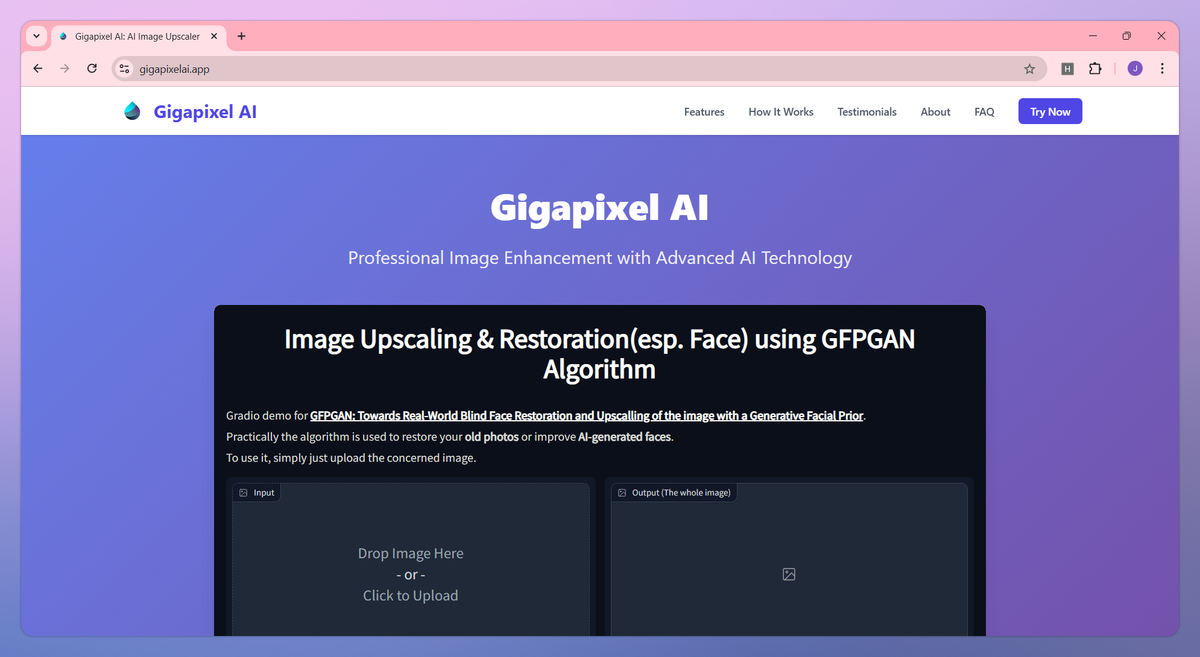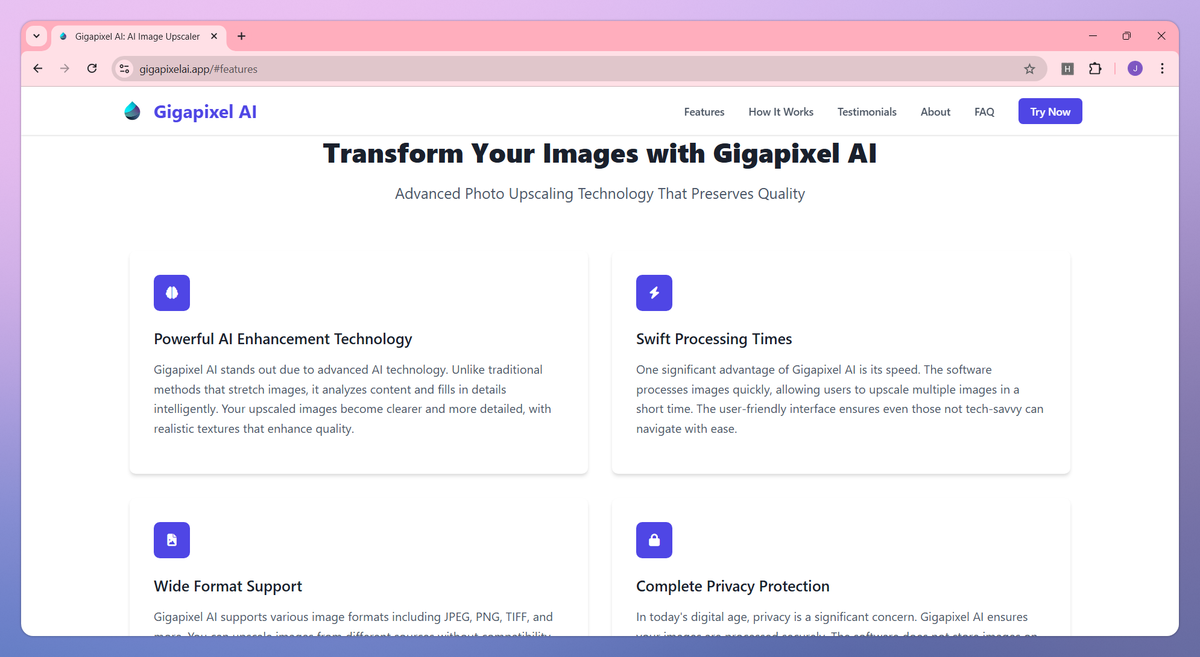

What is Gigapixel AI?
Gigapixel AI is an image upscaling tool that intelligently enlarges photos while adding realistic details. It analyzes image content instead of simply stretching pixels, supports multiple formats including JPEG, PNG, and TIFF, and processes files quickly without storing them on servers to help photographers, graphic designers, and digital artists create high-quality enlargements for printing and professional use.
What sets Gigapixel AI apart?
Gigapixel AI sets itself apart with specialized facial restoration technology that brings old or low-quality portrait photos back to life with natural-looking details. This face-focused upscaling proves particularly useful for family historians and portrait photographers working with archived images that show signs of age or damage. The software's ability to handle both general scenes and human faces with equal skill makes it a standout tool in the photo restoration field.
Gigapixel AI Use Cases
- Photo upscaling & enhancement
- Old photo restoration
- AI face improvement
- Large format printing
Who uses Gigapixel AI?
Features and Benefits
- Enlarge images while intelligently adding realistic details and textures instead of simply stretching pixels.
AI Image Upscaling
- Restore facial details in old photos or AI-generated images using specialized GFPGAN technology.
Face Restoration
- Process various image formats including JPEG, PNG, and TIFF without compatibility concerns.
Multi-Format Support
- Increase image resolution up to four times the original size with a maximum output of 6400 pixels.
4x Upscaling
- Process images securely without storing them on servers, ensuring your visual content remains private.
Privacy Protection
Gigapixel AI Pros and Cons
Effectively enlarges low resolution images while maintaining acceptable quality
Simple and intuitive interface requires minimal technical knowledge
Saves significant time compared to manual photo editing methods
Works particularly well for basic images and old photos
Helpful for converting unusable low-quality images into workable files
Struggles with complex images and can produce unrealistic artifacts
Premium features are expensive compared to competitors
Processing time can be slow for larger images
Limited customization options and editing capabilities
Free version has restrictive limitations on usage







